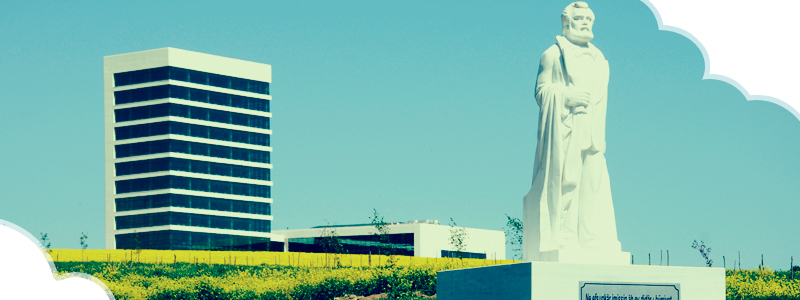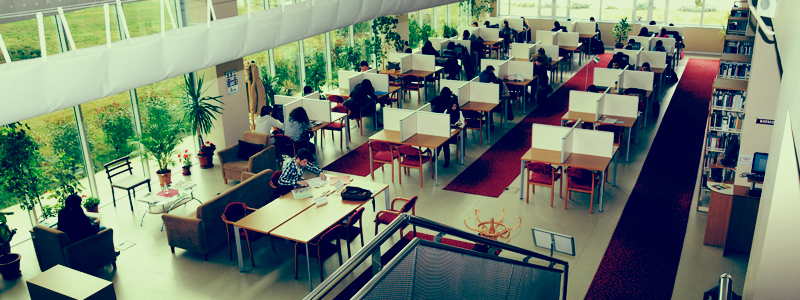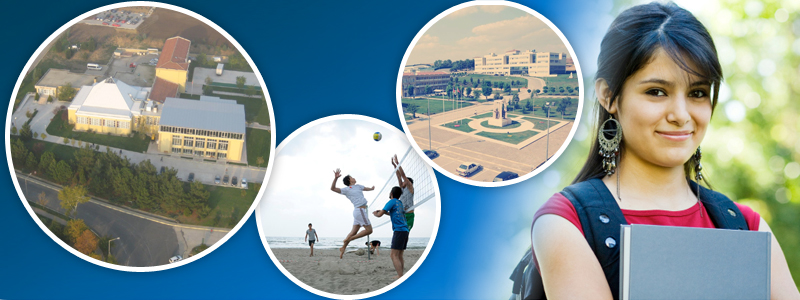| Academic Unit Presenting the Program | Soil Sciences And Plant Nutrition |
| Program Director | |
| Program Type | Master Degree With a Thesis Program |
| Level of Degree Earned | Graduate (Master’s Degree). |
| Degree Earned | Post graduate diploma is given to the graduates who successfully complete the post graduate study at the concerning department depending upon the graduate school of natural and applied sciences. |
| Education Type | Tam zamanlı |
| Registration Acceptance Conditions | (1) Candidates who apply for admission to a master programme should hold a valid bachelor’s degree and, except the applicants to the Department of Music, a minimum score of 55 from the Selection Examination for Academic Personnel and Graduate Studies (ALES) administered by the Student Selection and Placement Centre (ÖSYM). Instead of ALES score, candidates may choose to submit the scores of other internationally accepted examinations whose validity and equivalency are determined by the University Senate.
(2) The final admission score is determined as the total sum of %10 of the undergraduate GPA, %50 of ALES score and %40 of the grade received in the entrance examination which is conducted by a jury determined by and representing the Department. The final admission score should be at least 65. The number of accepted students is decided prior to the admission and the successful applicants are shortlisted according to the scores starting with the highest ones. |
| Recognition of Prior Learning | A student who has successfully completed at least one semester in a comparable master programme at another accredited institution is eligible as a lateral transfer. Lateral transfers are generally admitted after being evaluated on a case by case basis and upon the decision of the administration of the Department and the Graduate School. |
| Degree Requirements and Rules |
to take a minimum of 7 courses with a minimum of 21 local credits.
to succeed in all the courses with a letter grade of at least CC/S
to prepare and defend a master's dissertation
to have a Cumulative Grade Point Average of at least 2.00/4.00 with a minimum of 120 ECTS credits. |
| Program Profile | |
| Occupational Profiles of Graduates | |
| Access To Upper Degree | Upon successful completion of their master programme, the students are encouraged to embark on further academic studies on the graduate level (doctoral programme) on condition of having received the required score in ALES exam, possessing sufficient knowledge of English or another foreign language, and being successful in the entrance examination. |
| Exams, Assessment and Grading | For a student to have successfully completed the master programme, the GPA should be at least 65.
Grades
The grading system to evaluate the student performance is signified by the values in the chart below. For each course students are graded by letters. Letter grades, coefficients and ratios are as follows:
|
Grade
|
Letter Grade
|
Local Grade
|
Status
|
|
90-100
|
AA
|
4.00
|
Pass
|
|
85-89
|
BA
|
3.50
|
Pass
|
|
80-84
|
BB
|
3.00
|
Pass
|
|
75-79
|
CB
|
2.50
|
Pass
|
|
65-74
|
CC
|
2.00
|
Pass
|
|
0-64
|
FF
|
0
|
Fail
|
|
| Graduation Requirements | |
| Teaching Methods | Teaching Methods
Teaching methods are determined so as to improve skills, such as teaching-learning strategies, self-discipline, life-long learning, observation, sharing knowledge, presentation, critical thinking, teamwork, effective use of informatics.
Moreover, the choice of teaching methods pays heed to supporting students with different skills. The teaching methods used in the program are listed below*:
|
TEACHING METHODS*
|
LEARNING ACTIVITIES
|
MEANS
|
|
Course
|
Listening and interpretation
|
Standard classroom technologies, multimedia devices, projector, computer, overhead projector
|
|
Discussion Course
|
Listening and interpretation, observation/situation handling, critical thinking, question development
|
Standard classroom technologies, multimedia devices, projector, computer, overhead projector
|
|
Special Support / Structural Examples
|
Special skills planned beforehand
|
|
|
Case Study
|
Special skills planned beforehand
|
|
|
Brainstorming
|
Listening and interpretation, observation/situation handling, critical thinking, question development, team work
|
Standard classroom technologies, multimedia devices, projector, computer, overhead projector
|
|
Small Group Discussion
|
Listening and interpretation, observation/situation handling, critical thinking, question development
|
Standard classroom technologies, multimedia devices, projector, computer, overhead projector
|
|
Seminar
|
Research – lifelong learning, writing, reading, informatics, listening and interpretation, management skills
|
Standard classroom technologies, multimedia devices, projector, computer, overhead projector, special equipment
|
|
Group Study
|
Research – lifelong learning, writing, reading, informatics, critical thinking, question development, management skills, team work
|
|
|
Field / Land Study
|
Observation / situation handling, research – lifelong learning, writing, reading
|
|
|
Laboratory
|
Observation/situation handling, informatics, management skills, team work
|
Special equipment
|
|
Homework
|
Research – lifelong learning, writing, reading, Informatics
|
Internet database, library database, e-mail
|
|
|
|
|
|
|
|
|
|
|
|
|
|
|
|
|
|
|
|
|
*One or more of the listed methods can be used depending on the specificity of the course.
|
Program Outcomes
1-Field and laboratory testing and evaluation of research results based on detailed soil maps. Determining the social units of land in rural land planning, forest management plans and options and other non-agricultural use of cultivated plants, maps of the degree of compliance by the construction techniques, parametric and categorical systems of land evaluation.
2-The importance of soil and plant analysis to determine fertilizer needs of plants. Biological and chemical methods used for this purpose, and these methods correlated by selection of the appropriate chemical methods. Calibration of field experiments with the selected methods. Looking at the results of the analysis to determine fertilizer needs and make appropriate fertilizer advice,
3-The importance of the nature of pollution, causes of soil and water pollution, soil and water pollution and chemical methods used to classify precautions in this regard.
4-Different plants, sampling techniques, analysis, preparation of plant samples, some of the macro and micro nutrient analysis of plant samples.
5-Soils with different characteristics, determination and implementation of methods of chemical analysis to be applied
6-Classification of clay minerals, and micromorphological structures. The decomposition of clay minerals, transformation and metamorphosis, the use of clay in the field of engineering.
7-Lime and lime materials, definition, causes calcification of soils, lime requirement determination methods, factors affecting the soil needs lime and lime application techniques.
8-Colloids and colloidal systems, flocculation, dispersion, electrical double layer and zeta potential, resources and negative charges in the soil cation exchange equations.
9-Signs of deficiency and excess plant nutrients in plants due to the causes, development, diagnosis, and the boundaries of separation,
10-Effects on ionic balance of organic and inorganic fertilizers, the importance of interaction between the ions in feeding plants, plants, ion selectivity, ion flow theories of the roots, plant cells that are connected to the purchase of an electrostatic ion-ion balance and organic synthesis.
11-Organic and conventional agriculture, the importance of soil nutrient balance, and fertilization. According to the results of soil and plant analysis and determination of the type of fertilizer according to the type of plant can be cultivated
12-Potentiometric, volumetric, titrimetric, photometric and spectrophotometric methods of analysis the basic principles and applications.
13-The importance of sustainable agriculture, fertilizer use, soil and plant analysis and fertilizer relations between organic and inorganic fertilizer production and consumption quantities, problems and solutions, fertilization - Studying the relationship between human health,
14-Field and greenhouse conditions to be followed in resolving the various issues in the implementation of these methods with experimental methods and rules to be followed to show the roads.
15-Classes of engineering properties of soil suitability evaluation of the various uses of soil maps, soil tillage methods and the comparison of engineering properties.
16-Some physical and chemical properties of soils, cations and anions, and antagonistic interactions between the macro and micro nutrients sinergist Soils effect on yield quality of the various host plants.
17-Soil fertility, plant nutrition and fertilization, which is made in recent years about the various projects, research and literature study, interpretation and discussion.
18-Existing classification and evaluation methods in Turkey, according to Soil Taxonomy classification.
19-Properties of artificial and natural regulators, classification, usage causes and effects of soil properties.
|
Curriculum
|
|
|









